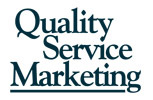I first learned about Ryan Scott from his blog post When Volunteers Become Voluntold. The term “voluntold” was new to me, but not the concept – it describes the oxymoron “mandatory volunteering” that many employees experience in the guise of corporate community involvement. I was once voluntold for a community fundraising effort by an employer and found the experience extremely frustrating. I read more of Ryan’s posts on his company’ Corporate Philanthropy & Volunteering Blog and discovered a kindred spirit with a passion for corporate community involvement and employee engagement.
We connected via email, and he graciously agreed to be interviewed here. Ryan is a technology entrepreneur who founded Causecast in 2007 to help companies harness their power to do good. He believes socially responsible companies can strengthen employee engagement through social engagement by involving employees in the company’s philanthropic efforts. However, when administrators are hampered by the cumbersome tracking of social campaign implementation and management, their philanthropic program may fall short. Causecast’s Community Impact Platform was developed in response as a centralized online solution to help companies better track and manage their giving and volunteer programs. According to Ryan, this platform “reinvents the possibilities around corporate philanthropy, enabling organizations to propel authentic grassroots momentum that captivates employees and the public alike.”
QSM: Why do you advocate corporate volunteerism as part of engagement? What does it mean for a company’s brand?
Ryan: Employee engagement is a big concern for executives everywhere – in fact, one recent survey cited it as the top challenge for 2013. Many factors go into employee engagement, but research shows that one of them is social engagement – involving your company in purpose-filled work and getting your employees activated around that process. Not only does employee volunteerism and giving improve your brand internally – through increased employee retention, recruitment and engagement – it also helps your brand externally – through increased consumer trust and loyalty. Edelman’s Trust Barometer survey last year showed that the credibility of CEOs has plummeted, whereas the credibility of employees has risen. Never has it been more true that employees are your best brand ambassadors, and volunteerism gives them something meaningful to say and do that helps build authentic relationships with your community.
One company we just spoke with – Umpqua Bank – has an unheard of 93% participation rate in their volunteer program. They take their program very seriously, make it a priority from the top down and give employees one week a year to volunteer with organizations related to their cause focus. As a result, Umpqua’s compelling volunteer program has become a big boost to overall employee engagement.
QSM: What do successful companies do to get employee buy-in?
Ryan: Corporate volunteer programs are lifeless exercises in lip service without employee buy-in. A surefire way to drain any vitality from your program is to just set initiatives in motion on autopilot and assume that “if you build it they will come.” Actually, they won’t. Employees need to feel connected to the good citizenship your company is espousing, and they need to know that they play a role in setting the direction of that citizenship. After all, they’re your most important citizens.
So how do you get buy-in? Storytelling plays a big part – and I don’t mean storytelling from the top down. Companies that empower their employees to play a big role in charting their cause course and then encourage them to share their experiences with others do themselves a big favor in generating momentum with their program. That’s why our Community Impact Platform has social media capabilities built-in – to make it easy for employees to get the word out and get others engaged. When employees feel that they are drivers of change, and they can be public ambassadors of that change via an open forum of discussion about their experiences, the ingredients are there for a volunteer program with some real meat to it – the kind of program that generates impact for all involved.
QSM: How can a company maintain momentum with its employee volunteer program? What can a company do it keep it from becoming stale?
Ryan: I think you need to continuously find new ways for employees to get involved. Doing the same day of volunteering year after year is not only dull, it doesn’t allow you to build on your experiences or diversify your cause skills. That’s why Causecast offers numerous paths to impact, with ready-made campaigns like competitive corporate crowdfunding that gamify the challenge of fundraising to make it more fun and successful. Is your company engaged in disaster relief efforts after tragedies like Hurricane Sandy? Well how about expanding that to disaster preparedness, so that employees feel more connected to subsequent relief efforts and have the opportunity to become trained disaster relief volunteers who can help with hands-on work in times of crisis? There are so many different kind of volunteering opportunities to consider, and you’ll keep things fresh by staying plugged into the evolving thought leadership in this area and applying it to your own program.
We encourage our clients to map out a blueprint of their volunteer efforts throughout the year, so that we can fully leverage a calendar of volunteer opportunities and make them as meaningful and unique as possible – whether they’re theme-based (for holidays like Veterans Day) or strike deep into the heart of a company’s cause mission. The more you think ahead and put thought into the kinds of opportunities you’re presenting to your employees, the more resonant and interesting your program will be. The result will be increased participation rates, increased engagement around your company and increased impact for the cause at hand. Isn’t that what every company wants?
QSM: Thank you, Ryan!



